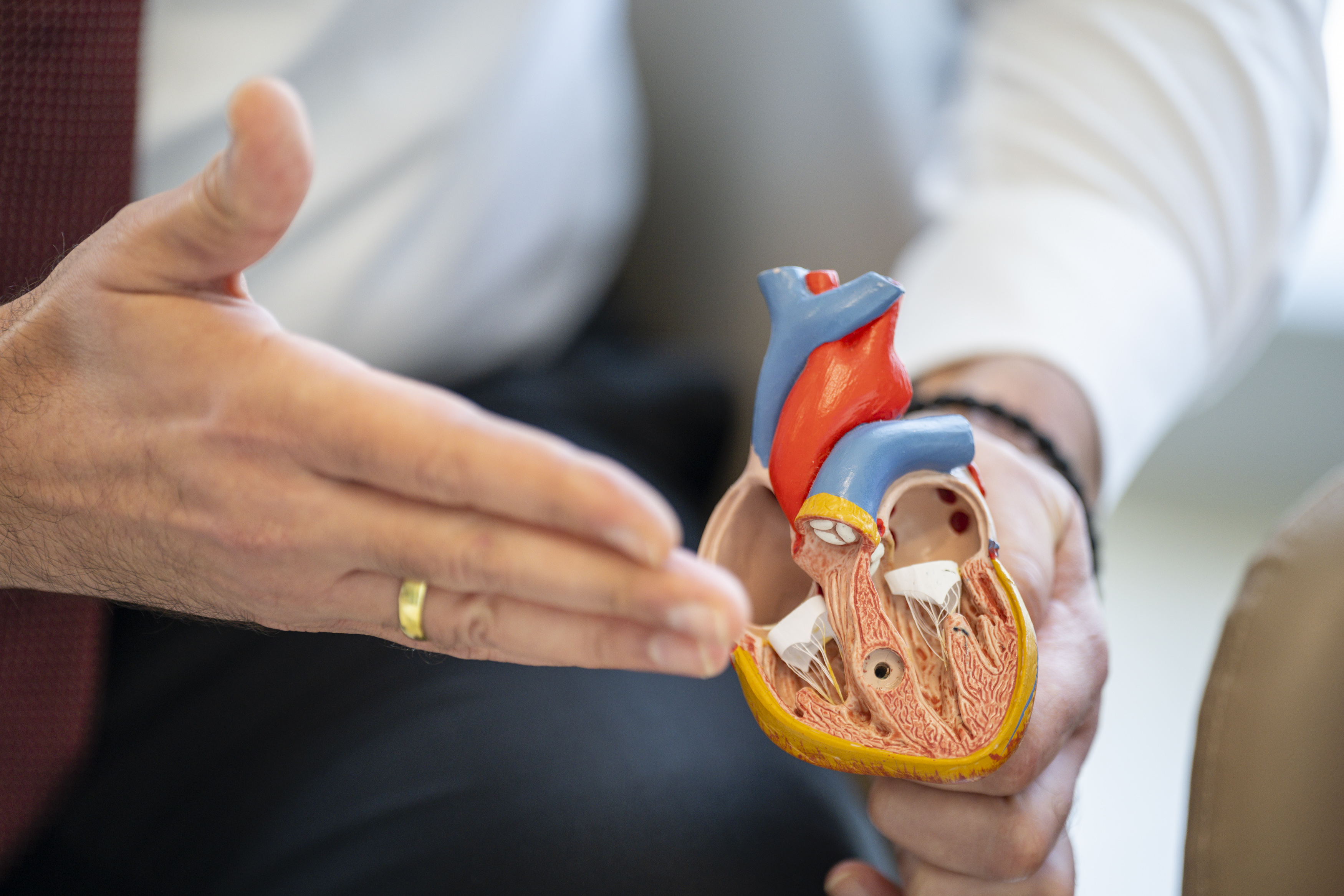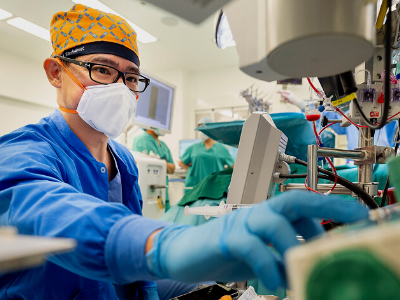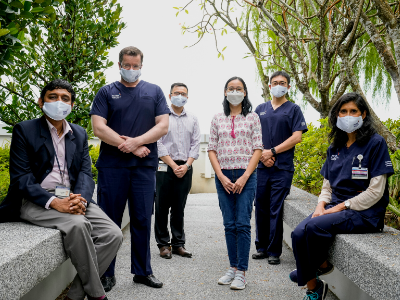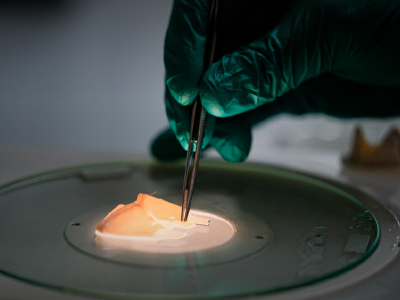Published on 23 May 2023
Collectively known as 'The Singapore Correction', the new procedures aim to make mitral valve surgery more intuitive for surgeons, while also reducing the risk of repair failures.
He has performed numerous successful heart surgeries throughout his esteemed 27-year career as a cardiac surgeon.
Yet, Professor Theo Kofidis, Head and Senior Consultant of the Department of Cardiac, Thoracic and Vascular Surgery (CTVS) at the National University Heart Centre, Singapore (NUHCS), could not quite shake off the nagging thought that the established techniques for mitral valve repair surgery – which is one of the most common heart surgeries – could be improved further.
The current techniques, named ‘The French Correction’, were conceptualised 40 years ago by prominent French heart surgeon Alain Carpentier.
Elaborating on the challenges of the current procedures for mitral valve surgery, Prof Kofidis said, “The techniques are not intuitive, nor are they standardised. As such, every surgeon is doing the heart valve repairs their own way. It is not reproducible…and this means that patients with similar diagnoses could potentially come out of their respective surgeries with different results.”
In addition, given that the ‘French Correction’ requires some degree of estimation when it comes to the number of mitral valve chords to use or cut out, the chances of young, inexperienced surgeons failing to perform a mitral valve repair surgery also increases.
When that happens, the patient’s mitral valve will likely have to be replaced – an outcome which runs the risk of complications such as infections and clotting.
“I know many surgeons, both in Singapore and abroad, who don't dare to try mitral valve surgery because they don't feel confident,” Prof Kofidis revealed. “So, they will choose to replace the mitral valve completely. This, however, opens the patient up to the risk of various complications.”
With these challenges in mind, Prof Kofidis racked his brains to come up with a way to standardise and simplify the mitral valve repair technique, without violating the heart’s physiological functions.
Eventually, inspired by Greek mythology and Roman architecture, Prof Kofidis developed 12 new mitral valve surgery techniques that are more intuitive and easily reproducible.
Crucially, these techniques – which are collectively named ‘The Singapore Correction’ – makes it easier for surgeons to repair the valve with more consistent patient outcomes after each surgery.

This simplifies the repair techniques by reducing the length, position, and number of cords that are used. Other benefits include reducing the amount of foreign material used in the patient’s body, as well as making it easier for surgeons to make final adjustments during the procedure.
“We hope that the new techniques can add value to surgeons around the world, by helping them to adopt and perform solid repairs, in both the open and keyhole surgery set-up,” said Prof Kofidis.
“This might potentially reduce the risk of repair failures, even in the hands of less experienced surgeons. The threshold for mitral valve repair could eventually be lowered. This means that more patients get to keep their valves, rather than have them replaced and live with the risk of related complications.”
Since the conceptualisation of the techniques last year, they have been used in the surgeries of 10 patients at NUHCS, with good outcomes.

The techniques – which were peer-reviewed and published in the European Journal of Cardio-Thoracic Surgery in February this year – have also since been used by hospitals in Italy and Greece.
While ‘The Singapore Correction’ has the potential to revolutionise mitral valve surgery, Prof Kofidis insisted that it is not the “holy grail” of heart surgery.
“There will be some cases where these new techniques will still need to be supplemented, or complement, the current techniques,” Prof Kofidis said.
“So, we should not look at any technique as the holy grail of heart surgery. But it will add value and leave a legacy in the world of heart surgery.”
In consultation with Professor Theo Kofidis, Head and Senior Consultant, CTVS, NUHCS.




